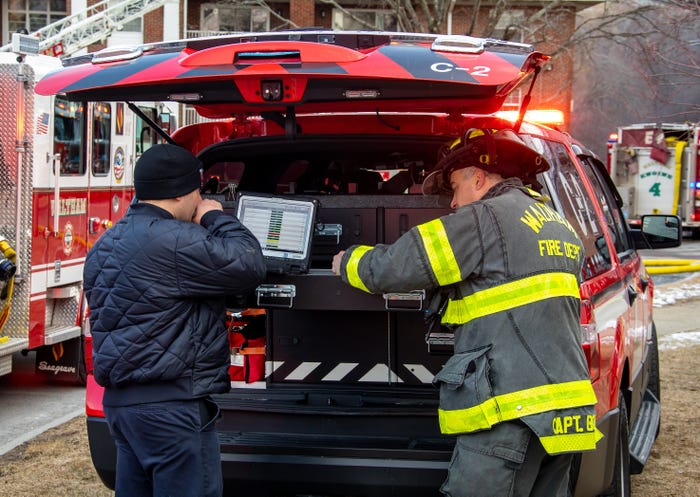Sheriff wants cameras in cruisersSheriff wants cameras in cruisers
Half of the police cruisers in Warrenton, Va., have video cameras. So do cruisers in the Virigina counties of Loudoun, Stafford, Spotsylvania, Prince
September 23, 2002
Half of the police cruisers in Warrenton, Va., have video cameras.
So do cruisers in the Virigina counties of Loudoun, Stafford, Spotsylvania, Prince William and Culpeper, according to Sheriff Joe Higgs.
Fauquier County (Va.)’s sheriff wants cameras in his patrol cruisers, too. Especially after Deputy Sean Healy was shot in the neck on Aug. 31 during a routine traffic stop.
The deputy survived and should return to work soon. The alleged shooter remains in jail.
Sheriff Higgs said his request for cruiser cameras is not a knee-jerk reaction to the shooting.
“I’ve been trying to get cameras in cars for about three years. Since Deputy Healy’s shooting it just highlights the benefit of those cameras.”
Such cameras, according to the sheriff, provide several benefits, including:
Video and audio evidence.
Liability protection.
Training.
The sheriff has applied for a $100,000 state grant, which would equip 20 patrol cruisers. He wants to eventually put cameras in all 25 cruisers.
“They are really a good tool,” Warrenton Lt. Allen Cubbage said.
Warrenton got its first cruiser cameras in the early 1990s, the lieutenant said.
Nine of the town’s 17 marked cruisers have cameras, mounted inside the windshield near the rearview mirror.
The department has one camera in stock and five more on order. Each of the new cameras costs $4,719.
Lt. Cubbage said the cameras help in several ways.
Most notably, they provide solid evidence.
Also, if a citizen complains about an officer, supervisors can look at the videotape instead of launching an internal investigation, Lt. Cubbage explained.
Getting cruiser cameras is long overdue, Sheriff Higgs said.
“It’s not new technology. It’s old technology that’s new to Fauquier.”
Sheriff Higgs also wants to purchase laptop computers for patrol deputies.
But, the county’s new 800-megahertz emergency radio system remains his top priority.
The multimillion-dollar system should be installed by February 2004.
Deputy Healy’s shooting illustrated the current emergency radio system’s failure, according to the sheriff.
“Here he is laying on the side of the road . . . and he had no means of communication,” the sheriff said.
The deputy’s hand-held radio did not work when he was shot.
And, during the 23-hour search for the shooter, the sheriff’s command center could not communicate with police agencies from surrounding counties that helped.
For years he has warned of the potential dangers created by the faulty radio system, the sheriff said.
“It has now come home to roost.”
(Copyright 2002, The Fauquier Citizen. All rights reserved. Republished with permission from the publisher.)



